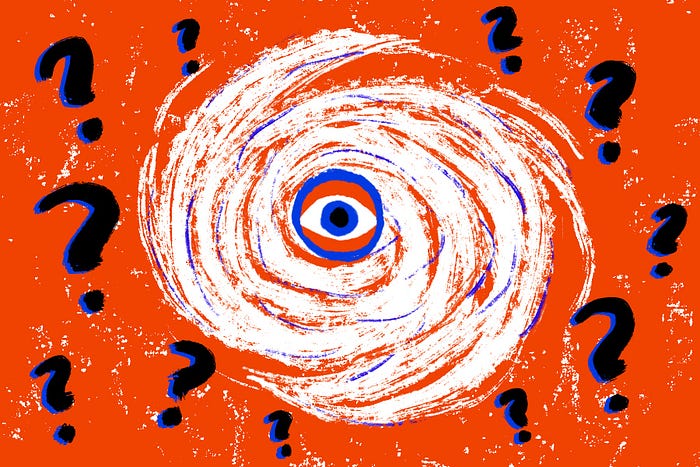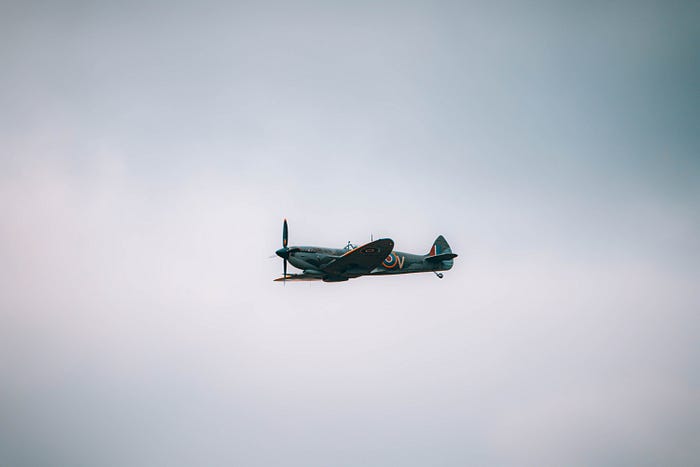

Why Are Hurricane Names So… White?
source link: https://aninjusticemag.com/why-are-hurricane-names-so-white-766a68089319
Go to the source link to view the article. You can view the picture content, updated content and better typesetting reading experience. If the link is broken, please click the button below to view the snapshot at that time.

Why Are Hurricane Names So… White?
A breakdown of the colonial roots of meteorology

Most Atlantic tropical cyclones have one thing in common: names that are characteristically Caucasian.
Bonnie. Ian. Lisa. Richard. The list for 2022 goes on. I mean, is anyone even named Bonnie anymore? It reminds me of those souvenir keychains stands that sport merchandise with as many names as possible, yet always fail to deliver on diversity.
As a Floridian and frequent victim of hurricanes and tropical storms, I’ve always wondered where these names come from and who gets to decide them. I’m not necessarily here to argue that we need more diversity in natural disaster, but the backstory of hurricane naming conventions actually reveals a lot about the problematic history of tropical meteorology.
From indigenous knowledge to colonial violence

A few months ago, I read the book Storm Surge: Hurricane Sandy, Our Changing Climate, and Extreme Weather of the Past and Future by Adam Sobel for a class. Most of the information in this section comes from that book, unless you see a hyperlink.
Storm Surge talks for a bit about the forgotten indigenous beginnings of tropical cyclone knowledge. The very word “hurricane” comes from the word hurakan in the Taino language.
The Taino were a group of indigenous people based in the Caribbean. They were, unfortunately, some of the first Americans to come into contact with Christopher Columbus. Though historians considered them completely wiped out by disease and violence, some Caribbean people today identify as Taino descendants, so their culture should not be considered extinct.
The Taino had a hurricane goddess, Guabancex, who was represented in imagery with her arms forming a spiral. You can check out some really cool cave art depicting her here.
Hurricanes are comprised of branching bands of cloud that spiral around a central “eye.” From above, they look like this:

The fact that the Taino chose to illustrate Guabancex with her arms spiraling counterclockwise (yes, just like hurricanes) indicates that they likely had knowledge of the spiraling nature of hurricanes long before colonizing powers did. This runs counter to the long-held narrative that indigenous knowledge was primitive.
During the 20th century, tropical regions became of great meteorological interest. Research into tropical cyclones was necessary for success in the World War II Pacific theater, a region that had been long overlooked by western meteorology.
Storm Surge goes on to discuss new discoveries following World War II, such as the Madden-Julian Oscillation, which Sobel writes about extensively. This research led to more reliable forecasts for storms in the region. Of course, this knowledge did not come without the violence of war, so it’s important to remember that unfortunate caveat.
Misogyny & meteorology

Hurricane naming was popularized during World War II when U.S. military officials found it helpful for communication about multiple storms. That seems reasonable, but the full story is a little more… problematic.
At first, all cyclone names were feminine, unlike in modern times. Why? These military meteorologists were actually nicknaming the storms after their girlfriends. They thought that the unpredictability of hurricanes was analogous to the “unpredictability” of women.
In the late 1970s, as sexism became more of a mainstream issue, a system of both masculine and feminine names was introduced. This is essentially the system we know today.
It’s good that we started giving hurricanes human names. It helps make them easy to remember, and it makes meteorology more accessible than using old systems like naming them after saints or the Greek alphabet (which was only fully retired last year). But, once again, we shouldn’t forget the full story.
The current Atlantic system

Nowadays, Atlantic storm names alternate between masculine and feminine, with the starting gender rotating every year. There are six lists of names that are reused, so every six years, you’ll usually see the same names. For example, this year’s Tropical Storm Alex (Hey, that’s me!) shares the same name as 2016’s Hurricane Alex.
When the devastation of a storm is particularly notable, the name is retired, and a new one is chosen. One instance of this is 2016’s Hurricane Matthew, which caused billions in damage and hundreds of fatalities. For the 2022 season, the name will be replaced with Martin.
Atlantic hurricane names are curated by the World Meteorological Organization. Typically, these names are of English, Spanish, or French origin to reflect the primary languages spoken in this part of the world.
So, what’s in a name?
I guess that brings us back to that original question: Why are Atlantic hurricane names so white? Well, we can partly blame this on only sourcing from these select European languages, but we can also blame it on many of the included names being decades old.
While “Bonnie” might make us think of an old white lady, it was probably a pretty popular name when it was first introduced to the list. The world was also less racially inclusive back then, so many of these older names were more white-American-centric.
It’s also important to remember that this scheme is only for the Atlantic. In other parts of the world, naming conventions continue to reflect the common languages spoken in each region.
In the Central Pacific, native languages like Hawaiian inspire storm monikers. In Asia, all affected countries are able to directly select names to contribute.
Overall, I think the naming conventions in the Atlantic make sense despite their controversial history. I do just want to offer a few critiques:
- These names could better represent the increasing diversity of the Americas, pooling from common African, Asian, etc. names as well.
- Including indigenous names, especially to acknowledge their early attunement to hurricane knowledge, would be nice.
Of course, it would be necessary to make sure these potential names are easy to communicate and pronounce in the widely spoken languages of English, Spanish, and French.
The fact that we personify storms is pretty neat, and I appreciate all of the editing that the naming conventions have already undergone. Tropical meteorology has a fascinating history, so I urge you to remember and think critically about it this hurricane season.
Recommend
About Joyk
Aggregate valuable and interesting links.
Joyk means Joy of geeK